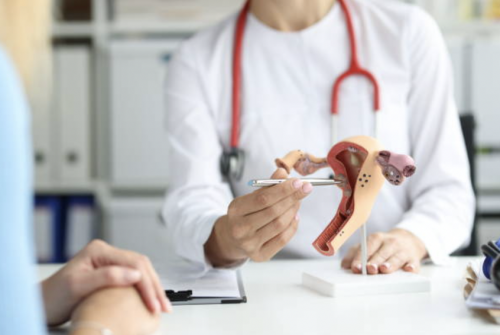
Little do people know that Hysterectomy is the second most common surgery in the United States after C-section in gynecology. There are many reasons for doctors to recommend a Hysterectomy; new research has now shown that women who had undergone a Hysterectomy were more likely to suffer from heart disease and other health issues even if they retained their ovaries.
What Is A Hysterectomy?
A Hysterectomy is a Fibroid removal surgery specifically extracting the womb (uterus) and, in some complicated cases, the fallopian tubes, cervix, and ovaries, depending on the fibroid’s location. The surgery can be performed through a traditional incision in the abdomen, a small incision in the belly button, or vaginally.
Being a major operation for a woman, this surgical approach is only adopted when other treatments like a hysteroscopy or myomectomy haven’t successfully treated fibroids or other chronic pelvic or uterine problems.
Types of Hysterectomy?
A Supracervical Hysterectomy: Also known as partial Hysterectomy, it only involves uterus removal.
A Total Hysterectomy: It also includes removal of both uterus and cervix, and if required, ovaries and fallopian tubes are extracted too.
Side Effects of Hysterectomy?
Having a Hysterectomy is a big life change for your body; following a Hysterectomy, you cannot become pregnant and also go into early menopause. Like any other surgery, Hysterectomy also has some potential side effects and risks:
- Infection and damage to internal organs
- Heavy bleeding during or after the procedure
- Injury to other organs
- Blood clots
- Breathing or heart complications from anesthesia
- Bowel blockage
- Trouble urinating
- Complications that slow your recovery
Once the uterus is removed, women won’t get menstruation again, as does losing the conceiving capability.
Benefits of Hysterectomy
Sometimes, surgery is a better solution to fix what medicines or long-term medication use couldn’t fix. Women living with fibroids better know how painful and problematic it is for their daily life; a Hysterectomy can improve their quality of life. The patients can finally be freed from chronic pain and avoid the chances of unexpected or heavy bleeding. Above all, fibroids are one of the causes of an enlarged uterus that is removed during Hysterectomy preventing the fibroids from growing back.
Should you choose to go forward, our staff at USA Fibroids Centers are well equipped with the latest technologies and surgical experts walking you through a range of treatment options. Because we believe women only need fibroids removal and can preserve the uterus.
What to Consider Before Hysterectomy
Considering how practical the Hysterectomy treatment for fibroid removal is in eliminating the painful symptoms anyone has been experiencing, there are a few factors you should consider:
- Recovery Time: It can be six weeks or longer recovery period depending upon the condition.
- Chances of Infection: You can get an unintended infection during or after the surgery.
- Mental Health: The idea of never being able to get pregnant can cause depression, hormonal imbalances, and other problems.
- Heart Problems: You will have an increased risk for heart disease, high blood pressure, or obesity.
Why Is It Necessary For Fibroids?
The words of approval for a Hysterectomy will depend upon the size, severity of uterine fibroids, and the doctoring process you have already been through. The uterine fibroids develop in or around the uterus; during a pelvic or detailed exam, they can be seen within the uterus wall, inside the organ’s main cavity, or even on the outer surface. Therefore, the treatment plan will always depend on the individual cases, location, size, numbers, or classifications.
Most of the time, these uterine fibroids are very small or even invisible to the naked eye. In contrast, others are large enough to cause constant peeing in women, severe pain, interrupt the menstruation cycle, incite irregular bleeding, and other troublesome symptoms.
After a thorough diagnosis, physical exam, lab tests, and discussion with the medical team, a Hysterectomy for fibroid removal is generally recommended when a woman also has:
- Uncontrollable bleeding
- Been suffering from complications during delivery
- Cancer of productive organs, vagina, cervix, etc
- Severe Pelvic Inflammatory Disease
What To Expect From Hysterectomy For Fibroids
The surgery can be lifesaving, but many women with fibroids would rather not undergo a Hysterectomy because of the fertility effect and other pregnancy-related complications. The Hysterectomy surgery lasts about one to two hours, and you will stay in the hospital for about one or two days. The stay is required for complications monitoring which is common in major surgeries.
An average menopause age in the US is 51; with Hysterectomy, early menopause can bring hot flashes, vaginal dryness, emotional changes, decreased sex drive, and other dry skin issues. Don’t feel pressure, and there are lots of factors to consider before deciding to have this surgery. Ask your doctor if you think you might benefit from a Hysterectomy or still want to go for the alternative option.
Alternatives to Hysterectomy Surgery Risks
Given the information on Hysterectomy, its risk, and its long-lasting effects, the importance of considering alternative treatments is more demanding than ever. For women with Fibroids who don’t want to undergo surgery, UFE would be the better treatment path. It’s a non-surgical fibroid tumor treatment performed by a fibroid specialist. A tiny catheter is inserted into the thigh or wrist to reach the artery attached to the fibroid and blocks the artery to stop the blood flow to the fibroid and let it shrink till it dies.
Interesting Related Article: “Benefits of taking testosterone for women“
